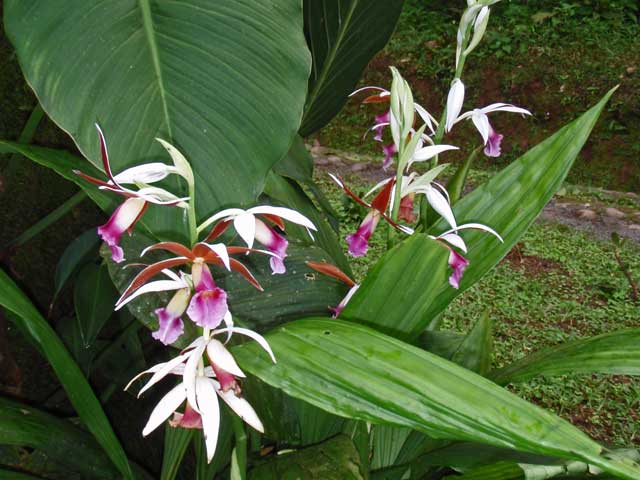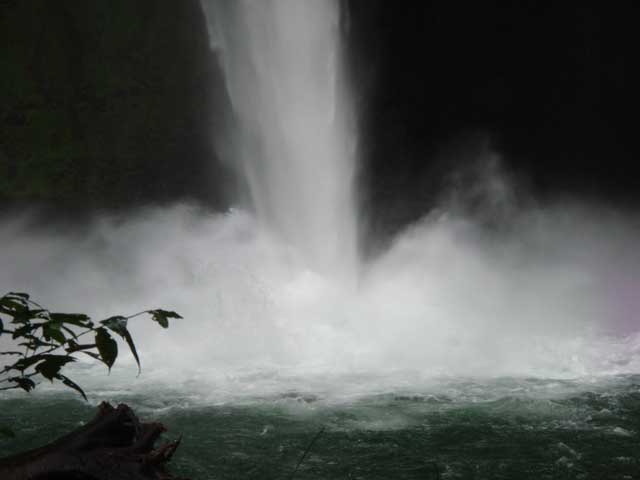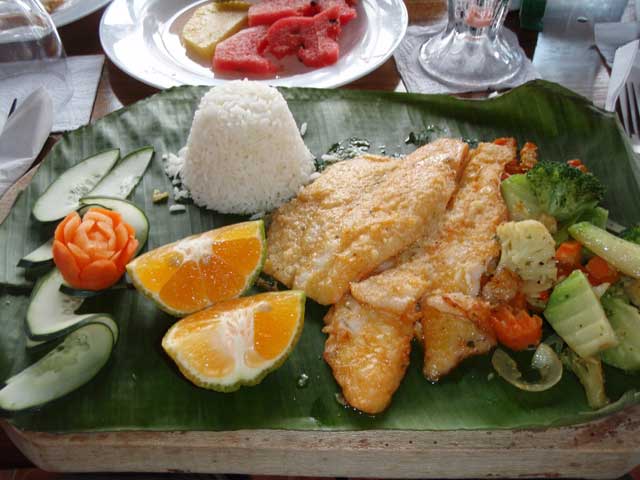
Unidentified orchid.

The big raspberry colored bag that we use to transport our walking sticks and liquids was left at the front desk of the hotel for us to pickup on our return to San José eight days hence. Leo Chavez, our Country Walkers guide for this trip arrived and loaded the bags on the bus with the assistance of Sergio Miranda the driver. From there we drove over to the airport hotel where we met the other walkers: Joan B. from Washington DC, Lin M. and Sean G. from Santa Rosa CA, and Judy L. and Neal B. from New York NY. Introducing ourselves while Sergio steered us away from San José north(west) on the Pan-American Highway. The road leads out of the central valley and up through the hills to San Ramon.
The first stop was the Cocora Cloudforest Butterfly Farm and hummingbird garden. There were numerous flowers to fit a hummingbird’s fancy, but it was the feeders with sugar water that was generating all the action. And what action it was! A pity photography (especially with my cameras) couldn’t capture those jeweled creatures flitting and darting about. The sheer variety and number of the birds was amazing! In our backyard in southern California, we only see Anna’s hummingbird and usually there is a dominant male who aggressively defends his territory (the trumpet creeper that shades our back deck) chasing away all male interlopers while courting the females. Here there were dozens of the birds in a ten foot radius, and of a half-dozen or so varieties. (I’m going to have to rely on Judy to provide a list of the ones we saw.)
After admiring the hummingbirds, we entered the screened enclosure where numerous varieties of butterflies floated on the humid air. The garden was planted with with butterfly-friendly plants, and there were a couple plates of fruit (bananas primarily) that attracted and feed the insects for closer viewing.
Leaving the butterfly farm, our route took us through the pass adjacent to the Arenal volcano to a town of Azul Valle where we stopped at the home of a local resident, Rosa, to have a snack of authentic local cuisine that she prepared in her kitchen. While Rosa finished her preparations, her son and Leo showed us the crops that the family raised. The son was also an artisan who carved, cut, and painted old tires into fanciful shapes, such as macaws and turtles for planters and decorations. We sampled the tasty fare which included homemade tortillas, a potato mixture to load on them, cassava root (colored with lipstick tree, a/k/a annatto), and two hot beverages – Costa Rican coffee and aguadulce, a tea made from sugar cane and flavored (at users’ discretion) with a citrus called a tangerine lemon (green on the outside, orange on the inside, sour like a lemon). I especially liked the aguadulce.
On the way to the La Fortuna waterfall, Sergio spotted a three-toed sloth in a tree as we were crossing the Piñas Blanca River. After parking the bus on the far side, we walked back on the pedestrian walkway with grated decking and a chain-link side fence – a recipe to aggravate my vertigo. Keeping my eyes forward, I managed to get to the folks who were looking at the sloth. However, more prominent in the trees was a male green iguana – which was more orange than green as it was mating season. It took longer to locate the sloth – a brown-green ball in a further tree, the green color coming from algae growing in its fur.
We drove up the road to the concessionaire for the La Fortuna waterfall, got our wrist bands, and then descended the steep trail to the base of the falls. Just as we began to descend, the rain began. Taking my cue from our guide Leo, I used an umbrella rather than my raincoat. (I did a lot of that on this trip – taking my cue on rain gear from Leo.) The waterfall is a tall narrow fall with a very turbulent pool at its base. Leo noted that the water was clear today – it could be cloudy and muddy. Retracing our steps back up the steep side of the slope, we returned to the concessionaire, and then continued our walk back down the road we had driven up.
As we walked down the road we spotted numerous birds that I made no effort to photograph – learned that lesson in Chile! I can’t remember all the birds we spotted although I’ll check with Judy who was birding on the trip. The more memorable sightings were toucans with their large beaks. Leo identified three varieties we saw as the aracari, the keel-billed, and the chestnut-mandibled (which has bright yellow plumage as well as yellow on its bill/mandible). When it flew away, it looked a bit like a flying banana.
At the base of the hill, we took a left and followed the road into the town of Fortuna to our restaurant, Bet-El. The restaurants in the area have a building style I haven’t seen before in that the dining area, while covered, is open on the sides to the outdoors. So we sat down for a splendid late lunch. Appetizers included fresh and locally grown pineapple and watermelon, a black bean sauce with fried tortilla chips, and fried cassava. For the main course I had the fried sea bass with garlic, which was served on a wooden platter covered with a banana leaf. Prior to that I had an appetizer of ceviche. Leo and Sergio had ordered fruit drinks, called frescas if memory serves, of watermelon and passionfruit. It looked so good, I ordered one of the watermelon (sandia) variety – it was like drinking pure watermelon – delicious! The whole meal was so good Neal was talking about bringing the cook home with them. The coconut flan for dessert only emphasized his point.
After lunch, we drove towards our lodgings for the evening, the Arenal Observatory Lodge. Along the road, Sergio spotted a troop of howler monkeys in the trees alongside the road, so we pulled off so we could observe them. We drove on past a number of hot spring spas (the area is volcanic), ultimately turning off onto a road in the national park by the Arenal Dam, with the hope of spotting more howler monkeys on a timed thirty minute walk. No monkeys were spotted and we re-boarded the bus to continue through the tropical twilight to the lodge. The winding road passed through deep clefts cut in the mountainside amid the tall trees that were silhouetted against the fading light of the overcast sky.

Lunch! Or 'evidence' as I told Sergio. The citrus on the plate are the previously mentioned tangerine lemons.
The bus dropped us off at our rooms after a quick stop at reception for Leo to collect the keys. We took a quick shower and high-tailed it to the bar to work on our journals. The lodge is on the grounds of the volcanic observatory established by the Smithsonian – the site was selected based on the safest possible location taking into account the geography around the peak and the location of the erupting craters at the peak. Our rooms were about 2 miles from the craters on the peak.
One of the amazing things about the stay at this lodge is you could hear the volcano erupting. Sounding like distant fireworks at the conclusion of a Fourth of July celebration, it happens only occasionally for 15-45 seconds at a time. But after dinner that evening, Leo, Judy, and Neal saw lava being ejected from the caldera – wow!
Although we didn’t see the lava, we heard the noise several times that evening. The beds in our room faced the volcano through the glass walls and doors that we left open to listen to the night sounds (both geologic and biologic) as well as the rain. We both slept well.